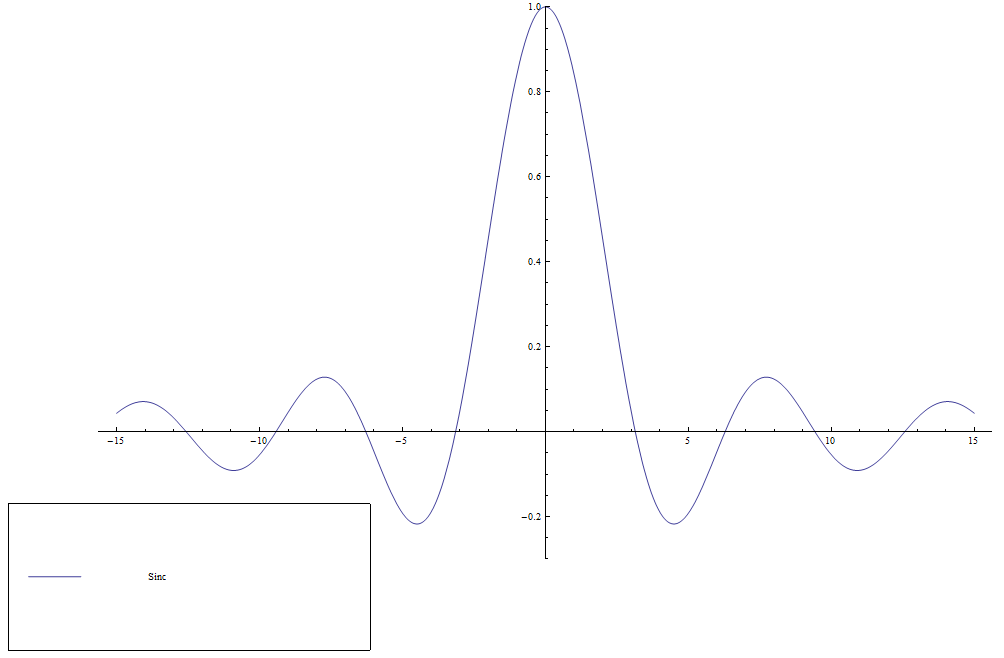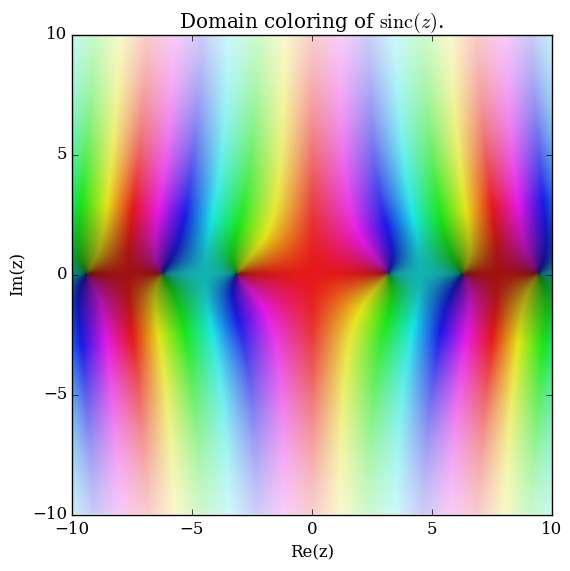Difference between revisions of "Sinc"
| Line 9: | Line 9: | ||
<gallery> | <gallery> | ||
File:Sinc.png|Plot of $\mathrm{sinc}$ on $[-15,15]$. | File:Sinc.png|Plot of $\mathrm{sinc}$ on $[-15,15]$. | ||
| − | File:Complexsincplot.png|[[Domain coloring | + | File:Complexsincplot.png|[[Domain coloring]] of $\mathrm{sinc}$. |
</gallery> | </gallery> | ||
</div> | </div> | ||
Revision as of 05:45, 17 May 2016
The $\mathrm{sinc}$ function (sometimes called the "unnormalized" $\mathrm{sinc}$ function) is defined by $$\mathrm{sinc}(z) = \left\{ \begin{array}{ll} \dfrac{\sin z}{z} &; z \neq 0 \\ 1 &; z=0. \end{array} \right.$$ It appears in the definition of the Sine integral function.
Domain coloring of $\mathrm{sinc}$.
Properties
Theorem: The following formula holds: $$\mathrm{sinc}(x)=\displaystyle\prod_{k=1}^{\infty} \cos \left( \dfrac{x}{2^k} \right).$$
Proof: █
Theorem
The following formula holds: $$\displaystyle\sum_{k=1}^{\infty} \mathrm{sinc}(k) = \dfrac{\pi-1}{2},$$ where $\mathrm{sinc}$ denotes the $\mathrm{sinc}$ function and $\pi$ denotes pi.
Proof
References
Theorem: The following formula holds: $$\displaystyle\sum_{k=1}^{\infty} (-1)^{k+1}\mathrm{sinc}(k)=\dfrac{1}{2}.$$
Proof: █
Videos
Infinite Product Evaluation with the Sinc Function
(The Sinc Function) Inverse Fourier Transform of Sinc & Fourier Transform of Sinc
Fourier Transform of a Sinc Function (or Inverse Fourier Transform of a Low Pass Filter)
Discrete-Time Signals and Systems Introduction (4/6): Special Functions
Integrating the sinc function

